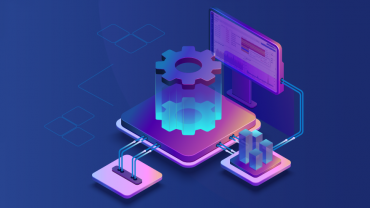Automate pattern detection in collected values. The new find history function provides multiple ways of searching for patterns in…


Automate pattern detection in collected values. The new find history function provides multiple ways of searching for patterns in…

The updated template import functionality brings a whole new layer of transparency to the template import process. Let’s take…

Create clean multipage dashboards, run them as slideshows, share dashboards with specific users, and stay in control of your…

Did you know that Zabbix has an out-of-the-box template for collecting Oracle database metrics? With this template, we can collect data like database, tablespace, ASM, and many other metrics agentlessly, by using ODBC. This blog post will guide you on how to set up ODBC monitoring for Oracle 11.2, 12.1, 18.5, or 19.2 database servers. This post can serve as the perfect set of guidelines for deploying Oracle database monitoring in your environment.

Overrides is an often overlooked feature of Low-level discovery that makes the discovery of different entities in your environment so much more flexible. In this blog post, we will take a look at how overrides work and how we can use them to extend our Low-level discovery rules with additional logic.

Zabbix value maps have become more powerful with the support of ranges and regex. Learn new tricks to display…

When you have devices spread across different locations and monitor these with a single Zabbix instance, you’ll encounter a challenge managing the various latencies to each location, especially when these locations span the world. Ping times can vary wildly from 10ms to 500ms and more depending on the internet connections.

New improvements might be unnoticed by many Zabbix users since they come to scalability, rather than to new features or some aspects of the user interface experience. However, these improvements might be beneficial for those Zabbix users who run really large instances.

In this blog post, we will talk about aggregating different kinds of devices that are disconnected from the general network. Finding out how many devices per kind are “down” right now. This can be useful in the Internet Service Provider type of situation.

From this post and the video, you’ll learn about the possibilities of database monitoring using out-of-the-box Zabbix functionality without having to install additional tools, additional applications, or additional software that might not be allowed by your company.

The low-level discovery was introduced in Zabbix 2.0 and still belongs to one of the all-time favorites. Before LLD was available, adding items was all manual work. For example adding new disks, new interfaces, network ports on switches and everything else was all manual labor. And then LLD came around and suddenly we were able to ‘discover’ entities, and based on those discovered entities we can add new items, triggers, and such automatically.

In today’s topic let’s talk about section “Administration” => “Queue”.
Zabbix queue also called delayed metrics represents data that is currently missing inside the monitoring tool.